An earlier version of this article was published here on 30/4/16. Comments were posted by ecoengine and Denis K on 3/5/16 and by quark on 4/5/16.
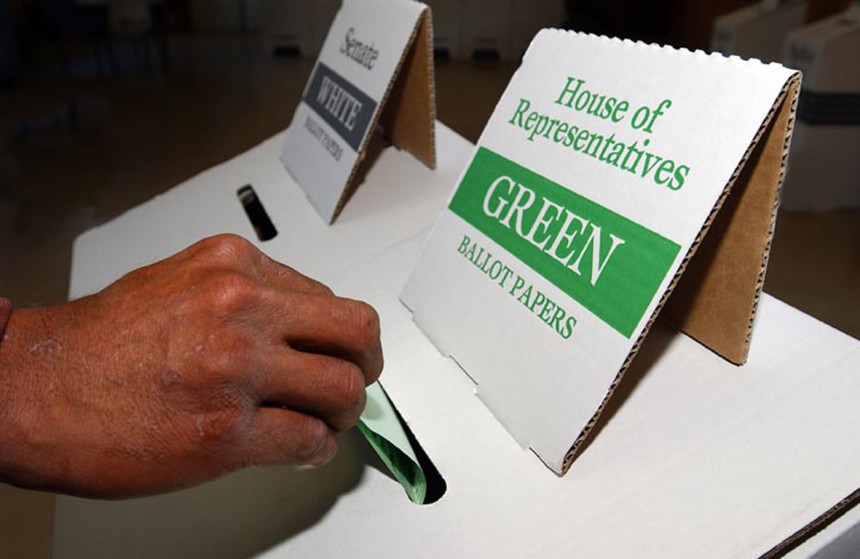
In the Australian Federal elections to be held on 2 July 2016, voters who support each of the policies listed below, are entitled to know whether each candidate asking for his/her vote will, if elected, try to implement that policy. We intend to ask each candidate, including the sitting member, his/her intentions should he/she be successful. Each response, or lack of response, will be posted here, to candobetter.net. Please feel encouraged to express your views about these proposals as comments or, when we make that feature available, to vote on them.
1. Government owned enterprises: Seek to establish government owned enterprises in all significant sectors of the economy where they don't already exist: insurance, banking, real estate, funeral services, car retail, car hire, passenger airlines, buses, rail, sea, road and air freight, mining, tourism, supermarkets and other retail outlets, etc.
2. Rebuild manufacturing: Re-build a large Australian manufacturing sector through (1) the establishment of government-owned manufacturing enterprises and (2) tariffs to protect private manufacturing companies from unfair overseas competition;
3. Sovereign control of Australia's wealth: Outlaw the sale of Australian land, natural resources and built resources to non-citizens. Long-term leases to foreign corporations also to be forbidden.
4. End privatisation: Past privatisations include Telstra (formerly Telecom), the Commonwealth bank and state banks, public transport, insurance, electricity, water. Conduct a public audit of all privatisations since 1983 including the recent sale of the Port of Melbourne. Seek to reverse these privatisations as far as possible;
5. End corporatisation of government services: Corporatisation is generally recognised as the first step towards outright privatisation. Government services be given a charter broader than just to achieve the maximum profit regardles of other outcomes. Charters should include to provide training, career structure, job security and decent wages to employees, to protect the environment, and to provide good service.
6.Trans-Pacific Partnership: Withdraw Australia from the TPP agreement. The TPP was negotiated in secret behind closed doors. It has little to do with trade. In many areas the TPP forbids our government from acting to protect the interests of citizens and the environment where a corporation can claim that such measures reduce its profitabily;
7. Free Internet social networks: The government seek to establish alternatives to Facebook, Google, Twitter and YouTube. These social networks are to respect the privacy of their users and be transparently administered. Rather than being funded by advertising, these services should be funded by general revenue. (Given that YouTube is now offering to remove advertising for an annual fee, it surely stands to reason that many Australia Internet users would be prepared to pay through the taxation system to be free of advertising.)
8. Open-source software: Promote the use of free open-source software by (1) requiring all government and statutary authorities to use the Linux operating system, and open-source applications such as the Libre Office suite in place of the Microsoft Office Suite and (2) Establish a public fund to adequately remunerate producers of open-source intellectual property including software.
9. Premises for small business: Acquire or build suitable premises for use by small businesses, retailers and food producers. The affordable rents and charges should be affordable and not a barrier to capable people being able tpo set up their own businesses;
10. Reduce migration: Reduce Australia's net migration to zero. Net migration should reamin atr zero at least until such time as we can know that no other native Australian animal is threatened with extinction because of the loss of its habitat to accommodate newcomers. Require the Victorian government to dismantle the "Live in Victoria" web-site as immigration is a federal, and not state, responsibility. See Foreign Policy on refugees;
11. Stop the clearing of native forests: Whether for throw-away paper products or building products, the logging of native forests be outlawed. Only timber from plantations must be used;
12. Stop the killing of native wildlife: Outlaw the killing of native Australian wildlife. Re-build destroyed forests and grasslands and repopulate them with the native species which previously lived in those regions or else similar species where those species are extinct;
13. Reusable bevarage containers: require that all beverages be stored in standardised reusable bevarage containers for which refunds are to be paid. Refunds for the smallest bevarage containers should be no less than 50c. Refunds for larger bevarage containers should be more. Outlaw the use of throw-away drink cans;
14. Stop builtin obselescence: Outlaw the deliberate manufacture of artefacts to break, wear down prematurely or to fail due to lack of spare parts. Outlaw the importation of such artefacts;
15. Recycle organic waste: Organic waste to be recycled as garden compost or in larger specially built sites;
16. Eliminate wasteful packaging: Impose a tax on the volume of any packaged goods to provide an incentive to eliminate wasteful packaging that adds to the quantity of landfill at garbage tips.
17. Local production and consumption: Encourage the local production and consumption of all food and artifacts. Reduce the need for importation from overseas and transport over long distances;
18. Relocalisation: Work premises for the public service or government statutary authorities to be relocated close to where people live. Private sector to be encouraged to do the same. Over time this will reduce the need for cars, public transport and roads and should allow most to cycle or walk to work;
Basic needs: Full employment in secure and fulfilling occupations
19. Job guarantee: Federal government guarantee a job to everyone not employed by the private sector, local or state governments.
20. Full employment and equity: Implement "Creating effective local labour markets: a new framework for regional employment policy" (2008 - download 3.1 Mb pdf file from the University of Newcastle Center of Full Employment and Equity (CofFEE) Publications page);
21. On-the-job training, career progression: re-establish on-the-job training and career progression in all government departments and statutory authorities as an alternative to training at TAFE colleges and tertiary institutions; Encourage private enterprises to do the same;
22. Reduced working hours: Reduction of the working week to 35 hours. Given the repeated claims of Australia's increased economic efficiency since 1983, the economy should easily be able to manage if working hours were reduced to 35 hours per week, just for a start. Outlaw compulsory overtime. Require employers to offer workers, who don't need a full wage, to work reduced and flexible hours;
23. Close down sweat-shops: Governments must proactively act to close down factories, which use low-paid workers working for long hours. Re-introduce the state award system;
24. Commonwealth Employment Service: re-establish the Commonwealth Employment Service (CES), which was dismantled in 1998 by the Howard Government. The plethora of private job agencies which replaced the CES has not been nearly as effective in helping job-seekers to find full, part-time or temporary employment;
25. End Section 457 visas: Only allow employers to employ skilled workers where it can be shown that no worker in Australia can fill the vacancy. (Were the Commonwealth Employment Service reconstituted, it would become much easier to fill vacancies from within Australia);
26. Stop education funding cuts: Reverse the funding cuts to tertiary institutions and TAFE colleges;
27. Abolish university fees: Make tertiary education free as it is in Argentina, Brazil, Denmark, Finland, France, Germany, Norway, Slovenia, Sweden and Syria;
28. Provide for students' living needs: Re-establish the Whitlam Government's Tertiary Education Assistance Scheme (TEAS) so that University students don't have to work part-time to support themselves;
29. Stronger Tertiary Arts Faculties: More funding for university arts faculties. Provide more careers in the public service for Arts graduates. Encourage the private sector to do the same;
Basic needs: Other
30. Housing: Ensure that each Australian citizen has secure affordable shelter. Require of landlords to offer to renew tenancies except where renewal would cause hardship to the landlord;
31. Public liability insurance: Establish public liablity insurance as it exists in New Zealand. No-one, who has organised a public event and has taken all reasonable precautions, should fear financial ruin as a result of any mishap;
Democracy, Transparency and Accountability
32. Federal electorate constituency meetings: Each member of the House of Representatives be required to attend meetings of his/her constituents during election campaigns and at regular specified intervals;
33. Full accounting of taxation and public expenditure: All losses and gains should be accounted for in the Federal Budget. Losses should include: unutilised skill and experience by the unemployed and under-employed. The budget must give estimates of the value of worth of government services which cannot be quantified monetarily;
34. Transparency with the private sector: Except where national security may be compromised, no 'commercial in-confidence' contract to be signed with any member of the private sector at the initiative of the government. Discriminate in favour of contractors who do not require 'commercial in-confidence' contracts;
35. Public newsmedia to give all sides of the story: Where facts are disputed in any conflict, whether domestic or international, the charters of the ABC and SBS require that they give both sides of the conflict the opportunity to put their case to the viewing public. (See also Foreign policy);
36. Direct Democracy: In the next term of parliament, put to voters a referendum to adopt Direct Democracy as practised in Switzerland;
37. Use public discussion to prevent war: Invite representatives of foreign governments with which Australia is in conflict to put their case to the Australian public on television in interviews. Where possible, representatives of Australia put Australia's case in interviews on those countries' newsmedia (for example RT and PressTV);
Foreign policy: Syria
38. Recognise the elected Government of Syria: Recognise the government of President Bashar al-Assad as the legitimate government of Syria. The Syrian government enjoys far more popular support than the Australian government or any of the Western governments opposed to it, as verified in the June 1914 Presidential election and the Parliamentary elections of April 2016;
39. End Sanctions against Syria: End sanctions and invite the Syrian government to re-establish its embassy. The sanctions were imposed and the Syrian ambassador was expelled on the absurd fabricated pretext that the Syrian government had massacred its own supporters at Houla in 2013. Remunerate Syria for its trouble and expense;
40. Oppose the terrorist war against Syria: Oppose the illegal proxy terrorist war against the people of Syria which began in March 2011. By one estimate, that war has so far cost the lives of 250,000 Syrians, including 80,000 members of the Syrian Armed forces;
41. Stop Australians from going to war against Syria: Support Australian Federal Police actions to prevent Australians from going abroad to fight against the Syrian government. Seek collaboration with the Syrian authorities to bring any Australian citizen, known to have participated in that war against the Syrian people, to justice;
42. Compensate the Syrian government for care of Iraqi refugees: Remunerate the Syrian government for the trouble and expense it was put to for having to care for 1,300,000 refugees who fled to Syria as a result of the illegal wars of 1991 and 2003 and sanctions against Iraq in which Australia participated;
43. Support peaceful resolution of conflict: Act to bring an end to the Palestine/Israel conflict that will allow all sides to live in peace.
44. Dismantle Israel's nuclear weapons stockpile: The dismantlement of Israel's illegally acquired nuclear weapons be part of the peace settlement;
45. Free Mordechai Vanunu: Demand that Israel free former Australian resident Mordechai Vanunu who revealed to the world Israel's illegal possession of nuclear weapons. Offer Mordechai Vanunu asylum in Australia;
46. End the theft of Palestinian land: Oppose the illegal seizure of land by Israeli settlers in the occupied West Bank and the Golan Heights;
47. End dictatorial rule of Turkey: demand that the United Nations act to end the dictatorial and criminal conduct of the government of President Recep Tayyip Erdogan. This conduct includes: giving arms, supplies and sanctuary to terrorists fighting against the neighnouring government of Syria, the arrest of border guards who attempted to prevent supplies reaching the terrorists, allowing petroleum stolen from Syria by ISIS terrorists to be pipelined into Turkey and sold, the prosecution of jounalists critical of his government of terrorism, shooting down a Russian fighter in neighbouring Syria;
48. Oppose the invasion of Yemen. Ask that the United Nations take action against the invasion of Yemen by the Saudi Arabian dictatorship. Condemn the supply of banned cluster bombs made in the United States and their use by Saudi Arabia;
49. MH17: Demand an open public enquiry into destruction of Malay Airlines Flight MH17 in which 28 Australians were amongst the 298 killed on 17 July 2014. Request that the MH17 Black Box given to the Netherlands by East Ukranian rebels, records of communications between Kiev air traffic controllers and MH17 and the United States' government satellite surveillance recordings of flight MH17 be released be made available for that inquiry, as the Russian government has done with its satellite surveillance recordings;
50. Support democracy in Ukraine: Support those Ukrainians in Eastern Ukraine who are defending themselves against the regime that was installed in the CIA-orchestrated coup of January 2014;
51. Crimea: Recognise the secession of Crimea to Russia from Ukraine in February 2014, which was overwhelmingly supported by the inhabitants of Crimea in a referendum, as a legitimate act of self-determination and self-defence;
Human rights: Protection of human rights, civil liberties, freedom of speech and proper legal conduct by the authorities
52. Asylum to whistleblowers: Request that the United States' government publicly try Edward Snowden and Chelsea Manning before a jury for their alleged crimes as requested by them. Should this request be refused, offer political asylum to Edward Snowden and Chelsea Manning. Should the United States obstruct Australia's attempts to grant asylum, raise this issue at the United Nations. (Also see Free Mordechai Vanunu);
53. Julian Assange: Demand that the Swedish government guarantee that Julian Assange won't be forcibly repatriated to the United States from Sweden should he go to Sweden to face charges of rape. If the Swedish government does not comply, demand that the UK government to end the arbitrary detention of Australian whistleblower Julian Assange and allow him to return to Australia. ;
54. End surveillance of our phone calls, Internet browsing and e-mail: End the dragnet surveillance of all of our private communications by the United States' CIA and NSA, Britain's GCHQ, MI5 and MI6 and Australia's ASIO and ASIS as revealed by Edward Snowden. As Snowden has revealed, dragnet surveillance has not prevented one act of terrorism. Only allow surveillance of individuals or groups where there is reason to fear terrorism or other illegal acts;
55. Port Arthur Massacre: as required by law, conduct a coronial inquest into the murder of 35 Australians at Port Arthur on 28 April 1996 - the largest mass murder in Australia's history. The suppose evidence against Martin Bryant has never been tested in a court of law. All forensic evidence and eyewitness testimony proves Martin Bryant innocent of the crime. The only 'evidence' of Martin Bryant's guilt consists of a supposed confession made after he had been illegally interrogated in solitary confinement for 5 months. Prosecute all those known to have acted unlawfully against Martin Bryant;
56. Martin Bryant: Allow friends and relatives of Martin Bryant to see him in person so that they can verify for themselves the claim by the prison governor that Martin Bryant doesn't want to see anybody;
How you can help
If you agree with most, or all, of these policies, please consider standing as a candidate yourself at he next election if it is not possible for you to stand in this election. If you are a candidate who supports any of the policies listed above or if you know of any such candidate, please let us know so that we can promote that candidate and lift that candidate's profile.
Please feel encouraged to also promote these policies and candidates who support these policies on Twitter, FaceBook, other discussion forums or your own web-site. If you can think of any other policies we should promote, or even if you oppose or don't altogether agree with some of these policies, please also let us know by posting a comment below.
 "The Affordable Housing Party: the single issue party dedicated to solving Australia's housing affordability crisis. Australians are now living with some of the most unaffordable housing in the world, but it doesn't have to be this way! Obscene tax incentives to invest in property. Our lawmakers profit from the status quo. We opened up our housing market to investors all over the world. Australia's rapid population growth. Home buyers are paying too much to try to compete with investors. This can't go on forever!" Former journalist, Andrew Potts, Sydney, registered the Affordable Housing Party (AHP) with the Australian Electoral Commission earlier this month. Policies include: Phasing out negative gearing and capital gains discount on investment property sales; Stopping overseas buyers from buying Australian properties; Taxing properties left empty by investors; Cutting down immigration to 70,000 annually; Banning full time Airbnb properties; Ending “no fault” evictions for rental properties. Facebook page is https://www.facebook.com/AffordableHousingParty/
"The Affordable Housing Party: the single issue party dedicated to solving Australia's housing affordability crisis. Australians are now living with some of the most unaffordable housing in the world, but it doesn't have to be this way! Obscene tax incentives to invest in property. Our lawmakers profit from the status quo. We opened up our housing market to investors all over the world. Australia's rapid population growth. Home buyers are paying too much to try to compete with investors. This can't go on forever!" Former journalist, Andrew Potts, Sydney, registered the Affordable Housing Party (AHP) with the Australian Electoral Commission earlier this month. Policies include: Phasing out negative gearing and capital gains discount on investment property sales; Stopping overseas buyers from buying Australian properties; Taxing properties left empty by investors; Cutting down immigration to 70,000 annually; Banning full time Airbnb properties; Ending “no fault” evictions for rental properties. Facebook page is https://www.facebook.com/AffordableHousingParty/
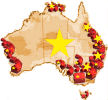 Chinese investors
Chinese investors 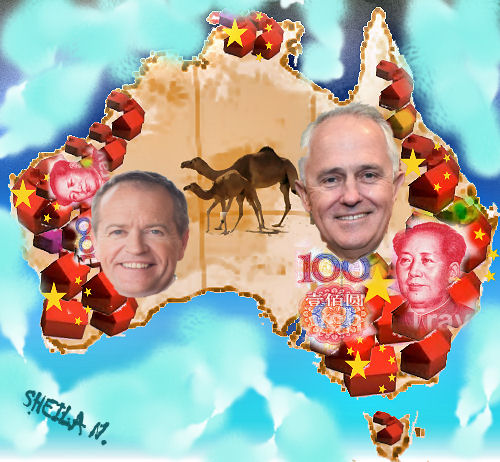
 “The big issues we feel are job security, housing affordability, planning in our suburbs and our environment. And all of those major indicators are going backwards with this onslaught of rapid population growth. So, it’s changing our daily lives. It’s gone beyond some big number into the future. It’s actually hitting us in the face when we drive out of our driveway in the morning and we try and get to work. Or when we try to look up a job when we try to get our next opportunity. Or when we look at our green space in our suburb that’s disappearing. Or looking at our urban heritage… that’s just being bulldozed for this highrise development”. (William Bourke, Sustainable Australia Party, speaking on 3AW to Neil Mitchell)
“The big issues we feel are job security, housing affordability, planning in our suburbs and our environment. And all of those major indicators are going backwards with this onslaught of rapid population growth. So, it’s changing our daily lives. It’s gone beyond some big number into the future. It’s actually hitting us in the face when we drive out of our driveway in the morning and we try and get to work. Or when we try to look up a job when we try to get our next opportunity. Or when we look at our green space in our suburb that’s disappearing. Or looking at our urban heritage… that’s just being bulldozed for this highrise development”. (William Bourke, Sustainable Australia Party, speaking on 3AW to Neil Mitchell) 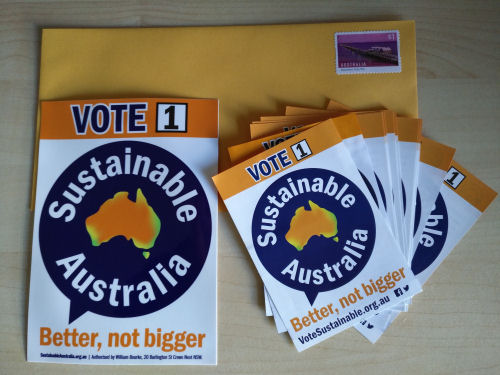

 The godless in Australia say enough is enough. After today’s release of Census data showing that non-believers make up 30.1% of the population – easily overtaking the previously-highest response “Catholic” for the first time in Census history – the Atheist Foundation of Australia says it is time to stop pandering to religious minorities and take religion out of politics. [Ed. This article also notifies of a 2018 Atheist convention in Australia featuring Salmon Rushdie.]
The godless in Australia say enough is enough. After today’s release of Census data showing that non-believers make up 30.1% of the population – easily overtaking the previously-highest response “Catholic” for the first time in Census history – the Atheist Foundation of Australia says it is time to stop pandering to religious minorities and take religion out of politics. [Ed. This article also notifies of a 2018 Atheist convention in Australia featuring Salmon Rushdie.]
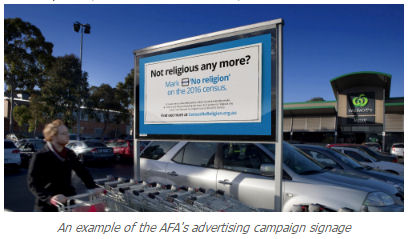

 Do you ever wonder what our society would look like if everyday people were calling the shots? If everyday people had more influence rather than a few privileged rich and large corporations? Would we have sold our public utilities? Would the centre of Melbourne look less like Manhattan; have less poorly constructed and dangerous residential towers? Would citizens be forced into selling off the backyards of family homes to pay their outrageous mortgages? Would we ever have allowed negative gearing and its looming financial tsunami?
Do you ever wonder what our society would look like if everyday people were calling the shots? If everyday people had more influence rather than a few privileged rich and large corporations? Would we have sold our public utilities? Would the centre of Melbourne look less like Manhattan; have less poorly constructed and dangerous residential towers? Would citizens be forced into selling off the backyards of family homes to pay their outrageous mortgages? Would we ever have allowed negative gearing and its looming financial tsunami? You probably would have noticed the media attention given to the Australian economies historic 26 year reign of economic growth which has been claimed is breaking that held by the Netherlands. Apart from being incorrect, (The Netherlands’ real GDP declined by 0.3% in the June quarter of 2003, and by 0.01% in the September quarter of that year) that record should go to Japan. In fact, if Japanese GDP data were available on a quarterly basis earlier than 1960, it’s likely that this run of continuous economic growth would have been even longer, perhaps as long as 38 years, inferring from annual data available back to 1955. Not bad for a nation mocked for its decision to abandon population growth and actually reduce its population.
You probably would have noticed the media attention given to the Australian economies historic 26 year reign of economic growth which has been claimed is breaking that held by the Netherlands. Apart from being incorrect, (The Netherlands’ real GDP declined by 0.3% in the June quarter of 2003, and by 0.01% in the September quarter of that year) that record should go to Japan. In fact, if Japanese GDP data were available on a quarterly basis earlier than 1960, it’s likely that this run of continuous economic growth would have been even longer, perhaps as long as 38 years, inferring from annual data available back to 1955. Not bad for a nation mocked for its decision to abandon population growth and actually reduce its population.
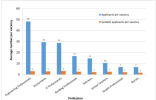 Unbelievably, the party that is supposed to safeguard the Australian environment – The Australian Greens – is trying to scuttle the Turnbull Government’s modest changes to so-called ‘skilled’ 457 visas. From
Unbelievably, the party that is supposed to safeguard the Australian environment – The Australian Greens – is trying to scuttle the Turnbull Government’s modest changes to so-called ‘skilled’ 457 visas. From 
 Unconventional Economist, Leith van Onselen again takes the ABC to task over its shocking bias in reporting and discussing the impacts of Australia's population growth. In this case he exposes the failure of political guests and the moderator on Q&A to respond to the core of an importance audience question about Australia's population ponzi and housing unaffordability. Article first published on Macrobusiness on April 13, 2017 at
Unconventional Economist, Leith van Onselen again takes the ABC to task over its shocking bias in reporting and discussing the impacts of Australia's population growth. In this case he exposes the failure of political guests and the moderator on Q&A to respond to the core of an importance audience question about Australia's population ponzi and housing unaffordability. Article first published on Macrobusiness on April 13, 2017 at  Recording of a timely and important interview with Tony Kevin, author of Return to Moscow UWA 2017. As a young Australian diplomat, Tony Kevin visited Brezhnev's Soviet Union in from 1969-1971. He returned on official business in 1985 when Chernenko was in power, then again, very briefly, in 1990. During these times he was not able to get to know the Russians due to the policy of both governments against fraternisation, thus Russia ironically became a source of growing fascination for him. He continued to inform his fascination from many sources, always at a distance. Concerned today by the threat to peace from US-NATO anti-Russian propaganda, and more fascinated by Russia than ever, he returned on his own to Russia (no longer the Soviet Union, of course) in 2016. Return to Moscow examines past and present attitudes to the people of Russia and to its leaders through empathic eyes and an understanding of the change in geopolitics from cold war to US interventionist.
Recording of a timely and important interview with Tony Kevin, author of Return to Moscow UWA 2017. As a young Australian diplomat, Tony Kevin visited Brezhnev's Soviet Union in from 1969-1971. He returned on official business in 1985 when Chernenko was in power, then again, very briefly, in 1990. During these times he was not able to get to know the Russians due to the policy of both governments against fraternisation, thus Russia ironically became a source of growing fascination for him. He continued to inform his fascination from many sources, always at a distance. Concerned today by the threat to peace from US-NATO anti-Russian propaganda, and more fascinated by Russia than ever, he returned on his own to Russia (no longer the Soviet Union, of course) in 2016. Return to Moscow examines past and present attitudes to the people of Russia and to its leaders through empathic eyes and an understanding of the change in geopolitics from cold war to US interventionist.  Kimberley artist Jackie Ellis is totally switched on to the environment and the impact on it of human activities and over population. Her paintings show an exquisite appreciation of the area that surrounds her, both intact and with human impact. Jackie, a member of Sustainable Population Australia, has generously donated two major works to that organisation to be auctioned as a fund raiser.
Kimberley artist Jackie Ellis is totally switched on to the environment and the impact on it of human activities and over population. Her paintings show an exquisite appreciation of the area that surrounds her, both intact and with human impact. Jackie, a member of Sustainable Population Australia, has generously donated two major works to that organisation to be auctioned as a fund raiser.

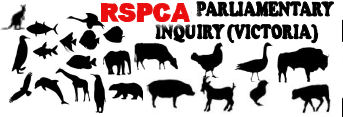 Candobetter.net has only just heard of this inquiry which closes today. However the Secretary of the inquiry has been contacted and she indicated that if individuals write in to this address:
Candobetter.net has only just heard of this inquiry which closes today. However the Secretary of the inquiry has been contacted and she indicated that if individuals write in to this address: 



 "The door to Australia is closing" says Nick McKim of the Australian Greens. Many people reading this might be alarmed, wondering how their relatives overseas can visit them in future. But no, this heading is misleading. It is only the little door at which asylum seekers arriving by boat appear. The big door to Australia is still wide open for others.
"The door to Australia is closing" says Nick McKim of the Australian Greens. Many people reading this might be alarmed, wondering how their relatives overseas can visit them in future. But no, this heading is misleading. It is only the little door at which asylum seekers arriving by boat appear. The big door to Australia is still wide open for others.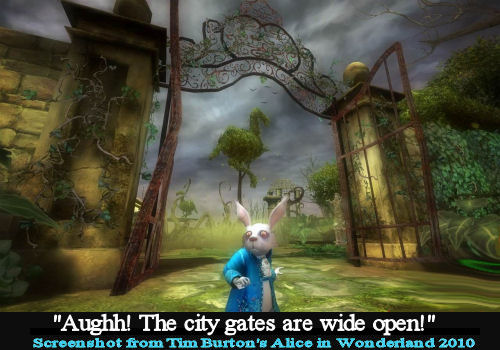
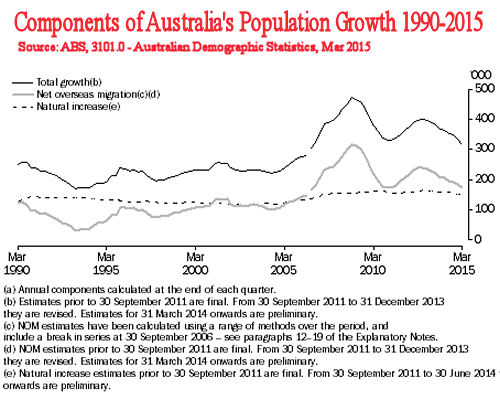










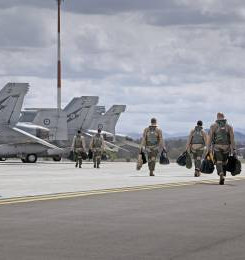
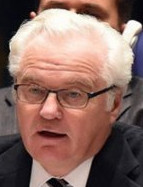


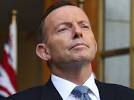 Allegations by Australian Prime Minister Tony Abbott against Russia may have no solid basis, but could escalate world tensions. Many people view these allegations as propaganda to provide a platform for eventual NATO aggression. These allegations have recently been reinforced by Julie Bishop, Minister for Foreign Affairs and Trade, as a reason for applying sanctions against Russia. See
Allegations by Australian Prime Minister Tony Abbott against Russia may have no solid basis, but could escalate world tensions. Many people view these allegations as propaganda to provide a platform for eventual NATO aggression. These allegations have recently been reinforced by Julie Bishop, Minister for Foreign Affairs and Trade, as a reason for applying sanctions against Russia. See  Discussing a possible pre film lunch with a friend tomorrow, I pointed out that there will probably be no cafes open because it is Good Friday. My friend answered that she thought that it was completely ridiculous in our “multicultural “ society for shops and cafes to be closed on Good Friday. I have heard this multicultural argument before and I don’t buy it.
Discussing a possible pre film lunch with a friend tomorrow, I pointed out that there will probably be no cafes open because it is Good Friday. My friend answered that she thought that it was completely ridiculous in our “multicultural “ society for shops and cafes to be closed on Good Friday. I have heard this multicultural argument before and I don’t buy it.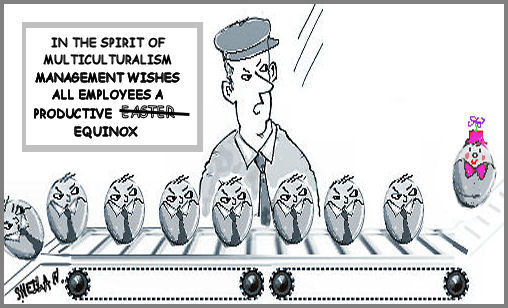 I took the opposite viewpoint, saying that if we do not have days that are different from others, then every day will ultimately be the same, and every hour in the day will also. I am taking advantage of the cinema being open but I would not object if it were closed for the day. Although I am not religious, I have sufficient relevant education to know that “Good Friday” is the most sombre day in the Christian calendar and one which some Christians may want to observe and they may welcome the opportunity to have a break from commerce.
I took the opposite viewpoint, saying that if we do not have days that are different from others, then every day will ultimately be the same, and every hour in the day will also. I am taking advantage of the cinema being open but I would not object if it were closed for the day. Although I am not religious, I have sufficient relevant education to know that “Good Friday” is the most sombre day in the Christian calendar and one which some Christians may want to observe and they may welcome the opportunity to have a break from commerce. 
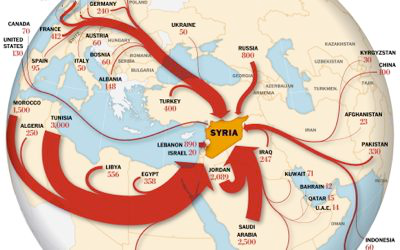

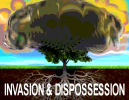 For example, the Ukraine is geopolitically important for many reasons; including its value as a food bowl and as an export route for oil and gas. The Ukrainian people are secondary to the interests of the foreign powers that seek to influence or control the territory and its resources.
For example, the Ukraine is geopolitically important for many reasons; including its value as a food bowl and as an export route for oil and gas. The Ukrainian people are secondary to the interests of the foreign powers that seek to influence or control the territory and its resources.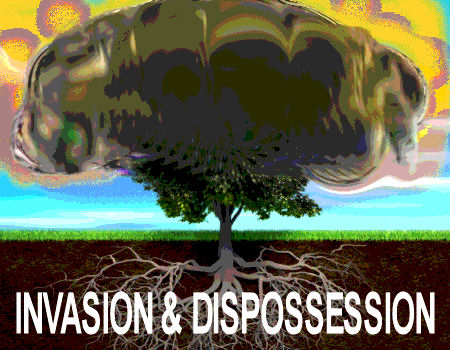

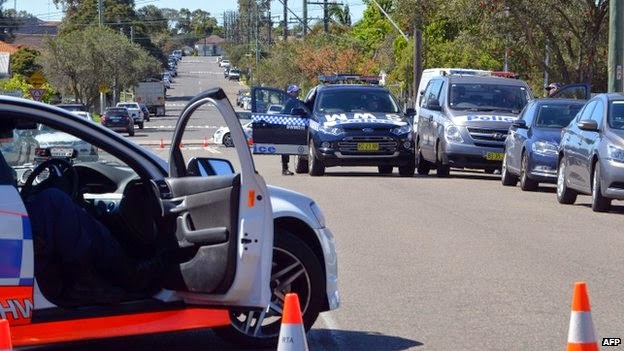



Recent comments